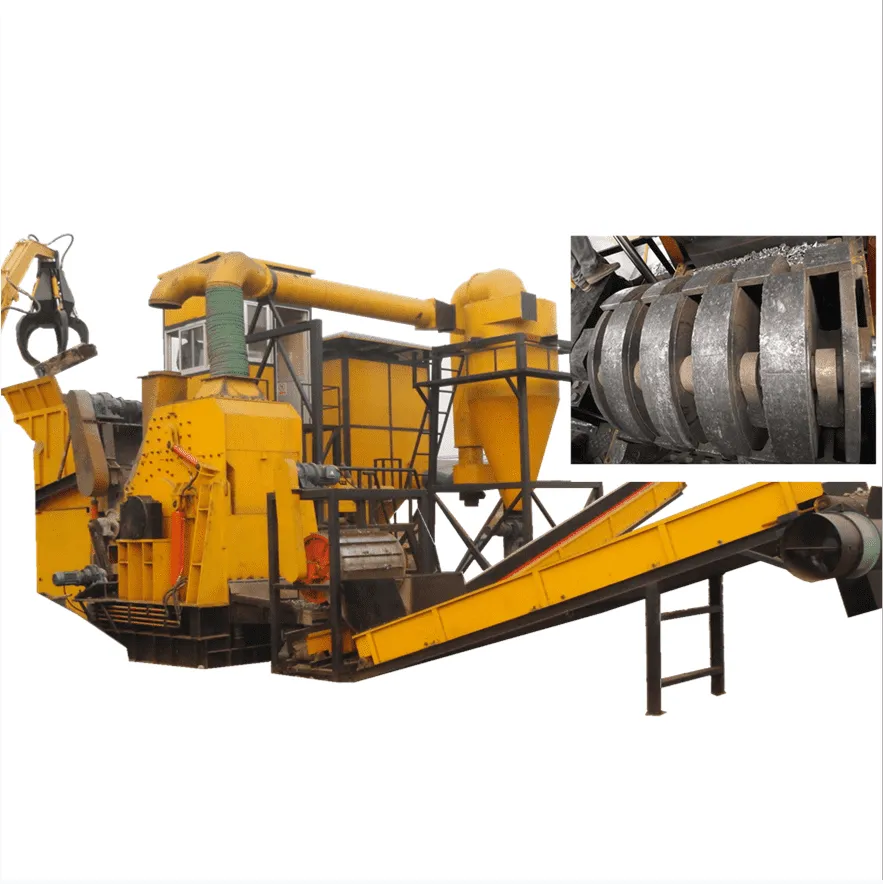For those involved in the scrap metal industry, the choice of equipment can dramatically influence both efficiency and profitability. Among the pivotal tools in any scrap yard is the scrap shredder, a machine uniquely designed to break down all types of discarded metal into smaller, manageable pieces. This article dives deep into the experience of using a scrap shredder, leveraging expertise to highlight its benefits, offering authoritative insights into the technology behind it, and establishing trust through evidence-backed assertions.

Scrap shredders are the cornerstone of modern recycling efforts. When raw scrap arrives at the facility, it's often in an irregular, bulk form, making it difficult to handle, store, or transport. Shredders simplify this process by quickly reducing the scrap into more uniform sizes, making subsequent processes far more efficient. Models like the horizontal and vertical shredders each have their own unique advantages. Horizontal shredders, praised for their ability to handle high volumes, are often deployed in larger facilities. Meanwhile, vertical shredders, with their compact designs, excel in smaller operations where space is at a premium.
From an expertise standpoint, it's noteworthy that the choice of shredder blade material and pattern dramatically influences the efficiency and longevity of the machine. High-grade alloys such as manganese steel are widely recognized for their durability and cutting performance. By investing in quality components, businesses often find they save significantly on maintenance costs in the long run.

Underlining the authoritativeness of shredder technology, it's essential to consider its positive impact on environmental sustainability. Shredded scrap not only increases the efficiency of melting operations but also ensures more consistent chemical composition in the recycled metals, enhancing the quality of the final product. With industries progressively leaning towards a circular economy, efficient metal recycling processes become indispensable, and shredders play a crucial role in achieving these sustainability goals.
Trustworthiness in the realm of scrap shredders is considerably enhanced by regular equipment audits and adherence to safety standards. Ensuring that shredders are equipped with features like automated jam detection and emergency shutdown sensors can protect both the workforce and the machinery, fostering a safer working environment.
scrap shredder
Real-world applications further solidify the credibility and essentiality of scrap shredders. In automobile recycling, for instance, shredders deactivate and dismantle end-of-life vehicles, efficiently separating valuable metals from non-metallic waste. This process not only maximizes recovery rates but also streamlines operations, giving recycling facilities a competitive edge.
Economic benefits cannot be overstated. The precision of a quality shredder reduces energy consumption per ton of processed metal, directly impacting the bottom line. Furthermore, shredded materials fetch better market prices due to their readiness for immediate melting or further processing.
Lastly, staying ahead of innovations is paramount for industry leaders. Recent developments in shredder technology, such as integration with IoT devices for predictive maintenance and efficiency tracking, are groundbreaking. These advancements offer facilities the ability to oversee operations remotely, preemptively address wear and tear issues, and optimize overall workflow.
In conclusion, the importance of selecting the appropriate scrap shredder is multifaceted, impacting economic performance, environmental sustainability, and operational safety. As technology continues to evolve, those who incorporate the latest innovations while maintaining rigorous standards of quality and safety will undoubtedly lead the industry. It's this blend of experience, expertise, authority, and trust that defines the future of scrap metal recycling.


